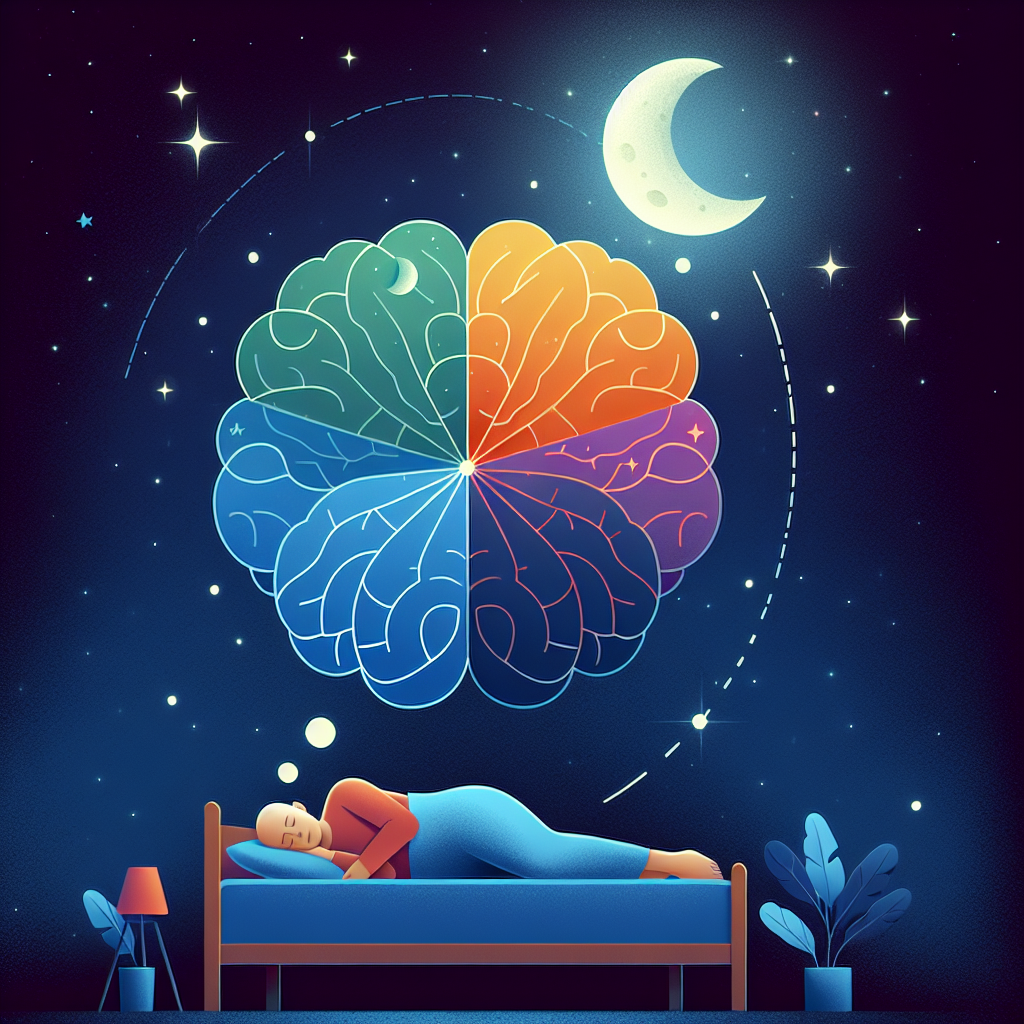
The Rhythm of Rest: What You Need to Know About Sleep Cycle Stages
Introduction
In our fast-paced world, sleep often takes a backseat to the pressing demands of work, family, and social commitments. Yet, understanding the rhythm of rest is not just a luxury; it is essential for our overall health and well-being. "The Rhythm of Rest: What You Need to Know About Sleep Cycle Stages" delves into the intricacies of sleep cycles, their profound effects on our daily lives, and why quality sleep should be prioritized.
The Science of Sleep
The human body operates on a complex system of biological rhythms, with sleep being one of the most critical. Sleep is not merely a passive state of rest but a dynamic process essential for cognitive function, emotional well-being, and physical health.
Understanding Sleep Stages
Sleep is divided into two main categories: non-REM (NREM) and REM sleep. These stages fluctuate throughout the night in cycles, each with distinct characteristics and benefits.
-
NREM Sleep
- Stage 1 (Light Sleep): The transition phase between wakefulness and sleep. It’s a light stage lasting a few minutes where you can be easily awakened, often associated with hypnic jerks.
- Stage 2 (Moderate Sleep): The body enters a deeper relaxation phase. Heart rate slows, and body temperature drops. This stage accounts for the majority of your total sleep time.
- Stage 3 (Deep Sleep): Also known as slow-wave sleep, this stage is crucial for physical recovery, growth, and immune function. It is the most restorative phase and is difficult to awaken from.
- REM Sleep
- Occurring about 90 minutes after falling asleep, REM sleep is characterized by rapid eye movement and heightened brain activity. This is the stage associated with vivid dreaming and is essential for emotional regulation and memory consolidation.
Sleep Cycle Duration
On average, a complete sleep cycle lasts between 90 to 110 minutes, repeating multiple times throughout the night. Adults typically experience four to six sleep cycles, with the proportion of REM sleep increasing in the latter half of the night. Understanding these cycles can optimize your sleep for improved energy and alertness during the day.
Why Sleep Cycles Matter
The implications of sleep cycle disruption can be profound. Let’s explore some real-world applications through case studies and insights from sleep experts.
Case Study 1: The Sleep-Deprived Student
A university student, Sarah, struggled academically due to poor sleep habits. She averaged 5 hours of sleep on weekdays, disrupting her NREM and REM cycles. By implementing a consistent sleep schedule and creating a restful environment, Sarah was able to recalibrate her sleep. After weeks of focusing on her sleep cycles, she reported improved focus, better grades, and a more positive outlook.
Analysis: This case highlights the importance of a structured sleep routine to protect the delicate balance of sleep stages, which in turn supports cognitive performance and emotional well-being.
Case Study 2: The Corporate Executive
John, a corporate executive, faced chronic fatigue and stress. He often worked late hours, leading to a fragmented sleep schedule. After consulting a sleep specialist, he learned about the detrimental effects of missed deep sleep on his performance and health. By adopting strategies to prioritize deep sleep, he noticed a significant boost in productivity and overall satisfaction.
Analysis: This study underscores how deep sleep is crucial for working professionals, linking quality sleep with enhanced performance and mental clarity.
Practical Tips for Enhancing Sleep Quality
Understanding "The Rhythm of Rest: What You Need to Know About Sleep Cycle Stages" empowers you to make informed choices for your sleep hygiene. Here are actionable tips to improve your sleep quality:
1. Establish a Sleep Schedule
Going to bed and waking up at the same time every day regulates your body’s internal clock. Consistency is key.
2. Create a Sleep-Inducing Environment
Ensure your bedroom is cool, dark, and quiet. Consider using blackout curtains or white noise machines to mitigate disturbances.
3. Limit Screen Time Before Bed
The blue light emitted by smartphones, tablets, and computers can interfere with the production of melatonin, the hormone responsible for sleep. Aim to disconnect electronics at least an hour before bedtime.
4. Mindful Eating and Drinking
Avoid large meals and caffeine close to bedtime. Opt for light snacks if you’re hungry, which can support restful sleep without causing discomfort.
5. Incorporate Relaxation Techniques
Practices such as meditation, deep breathing exercises, or gentle yoga can ease the transition into sleep and promote deeper sleep stages.
The Importance of Dreaming
Many people underestimate the role of dreaming in the sleep cycle. REM sleep, where the most vivid dreams occur, plays a crucial role in emotional health and memory consolidation.
The Theories Behind Dreaming
-
Cognitive Theory: Dreams help us process our daily experiences and emotions, allowing for emotional regulation.
- Physiological Theory: REM sleep may serve to activate and maintain neural pathways, which is essential for learning and memory.
Conclusion
Understanding the intricate dance of sleep cycles is vital in navigating the complexities of modern life. "The Rhythm of Rest: What You Need to Know About Sleep Cycle Stages" reveals that prioritizing sleep is not merely an act of self-care but a foundational aspect of a healthy lifestyle.
By implementing mindful practices, establishing routines, and appreciating the significance of each sleep stage, you can reclaim your nights and enhance your days. Sleep is not a destination; it’s a journey. Embrace it!
FAQs
1. What are the signs of sleep deprivation?
Common signs include fatigue, irritability, difficulty concentrating, and mood swings. Chronic sleep deprivation can lead to more serious health issues.
2. How much sleep do adults really need?
Most adults require between 7 to 9 hours of sleep per night for optimal health.
3. Can naps compensate for lost sleep?
Short naps can enhance alertness and performance but aren’ta substitute for a full night’s sleep. Regular, excessive napping can disrupt nighttime sleep, so it’s essential to manage nap length and timing wisely.
4. What is the best environment for sleep?
A dark, cool, and quiet room fosters better sleep. Also, consider using comfortable bedding and eliminating noise and pollutants.
5. How can I track my sleep cycles?
Various apps and wearable devices can help track sleep patterns. These tools can offer insights into how long you spend in each sleep stage, helping you make informed adjustments to improve sleep quality.
Enhancements
Long-Tail Keyword Variations
- Understanding the phases of sleep
- Importance of sleep cycle stages for health
- Tips for improving sleep quality
- Benefits of deep sleep and REM sleep
- How to manage sleep cycles effectively
By embracing the rich knowledge within "The Rhythm of Rest: What You Need to Know About Sleep Cycle Stages," readers can unlock the secrets of restorative sleep, paving the way for healthier, more vibrant lives. Prioritize your sleep today, and watch how it transforms your tomorrow!


















